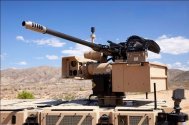You know what's worse?Sounds like the need to re-open/build four new public yards to rebuild the capacity they had in the early 90’s.
Don’t see how they can talk about growing the fleet while having less infrastructure to maintain it then they did during the Cold War?
Seems to me they are in a put up or shut up moment. Start giving realistic costs to actually grow the Navy along with the money required to maintain it, otherwise suck it up, accept a smaller role and move on with a different strategy.
The US Navy can outsource repairs to SSNs such as the Boise that went to Huntington-Ingalls Industries' Newport News shipyard in Virginia. This is one of two private shipyards in the country that can do nuclear work — the other is General Dynamics' Electric Boat in New England. Unlike the public shipyards, HASC officials said that these private shipyards would still have some spare capacity, but the next ballistic missile submarine, the Columbia class, has started production and the private shipyards will also be fully occupied. Only public shipyards remain, which, as the article indicates, always prioritized aircraft carriers and SSBNs, respectively in that order, SSNs are in third place in the list of priorities and, if the maintenance of a CVN, for example, delays, it will impact on the maintenance of the SSNs, if maintenance is delayed from SSBNs, maintenance of SSNs will be delayed.
The 2017-2022 window in which the private shipyards had an idle capacity, the US Navy could have optimized the plans and conducted several submarines waiting for maintenance to be worked on in the private shipyards, but if before 2017 the number of submarines to be wait was 15 and now it is 18 units of SSNs with the same problem, this suggests that it was left for that, the bureaucratic inertia impacted in the readiness force of the nuclear attack submarines of the US Navy.
And there are those who say that the US Navy has too many attack submarines, 50 units left over to be tied to aircraft carriers or escorting SSBNs… the reality is quite different, the ideal would be 66 units, without highlighting one for each attack group centered on aircraft carriers... but the number will drop to below 50 units, and this “such a large fleet” is barely handling 80% of the missions because of maintenance, training, new submarines not yet certified for missions, etc. and does not help the great distance they are forced to travel to their patrol areas.
On the west coast is a large installation in Bremerton, not focused on submarines clearly, but equally capable of performing complex maintenance on submarines. There is also another facility at Pearl Harbor, but both are quite busy so much so that there are occasions when Pacific Fleet submarines have to resort to the public shipyard on the east coast, so there is no way out, the two private shipyards will have to absorb some of the work. or the situation will get even more complicated.
This reminds me of a parallel, at the time of the Cold War, under the Reagan administration, the readiness of the US Navy was also not high or in an effective condition to maintain a large operational fleet, even so its administration launched the plan to increase the number of combat ships for 600 units, Reagan almost managed to reach the number of 594 units (the US Navy's own internal numbers were 378 units for that same year, they administratively used a different counting system), however, even with the increase in ships in the "battle fleet", the operational readiness of ships remained the same as before Reagan's naval expansion plan, in some cases even worse.
What I mean is that an expanding navy can have a gigantic fleet but at the same time it may not be able to keep it operational, if this factor is taken to the limit, the Soviets (1964-1985) are the clearest example of this, another example was Reagan himself (1981-1988).


